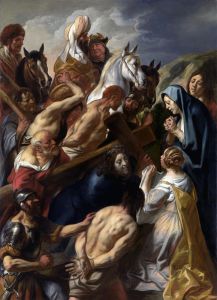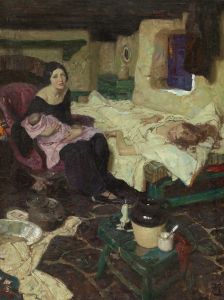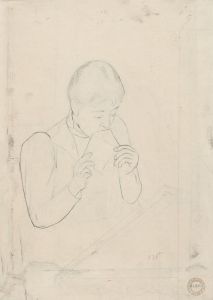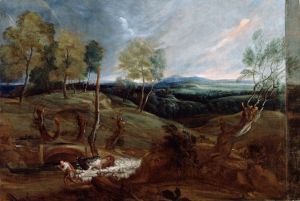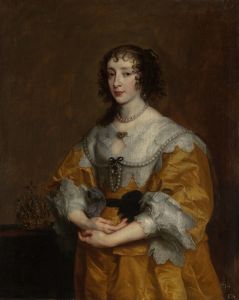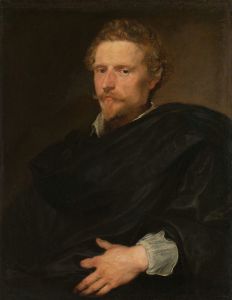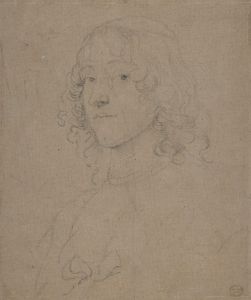
The Madonna And Child
A hand-painted replica of Anthony van Dyck’s masterpiece The Madonna And Child, meticulously crafted by professional artists to capture the true essence of the original. Each piece is created with museum-quality canvas and rare mineral pigments, carefully painted by experienced artists with delicate brushstrokes and rich, layered colors to perfectly recreate the texture of the original artwork. Unlike machine-printed reproductions, this hand-painted version brings the painting to life, infused with the artist’s emotions and skill in every stroke. Whether for personal collection or home decoration, it instantly elevates the artistic atmosphere of any space.
Anthony van Dyck, a prominent Flemish Baroque artist, is renowned for his portraits and religious works. Among his notable religious paintings is "The Madonna and Child," a theme that has been a central subject in Christian art for centuries. Van Dyck's interpretation of this theme reflects his unique style and the influence of his predecessors, such as Peter Paul Rubens, under whom he studied.
"The Madonna and Child" by Anthony van Dyck is a depiction of the Virgin Mary holding the infant Jesus. This subject is a traditional representation in Christian iconography, symbolizing the bond between mother and child and the divine nature of Christ. Van Dyck's version of this theme is characterized by his delicate brushwork, attention to detail, and the emotional depth he brings to the figures.
Van Dyck's painting style is marked by its elegance and the graceful portrayal of figures. In "The Madonna and Child," he employs a soft color palette and a gentle use of light and shadow to create a serene and intimate atmosphere. The figures are often depicted with a sense of tenderness and affection, capturing the human aspect of the divine relationship. This approach is indicative of Van Dyck's ability to convey emotion and spirituality through his art.
The composition of "The Madonna and Child" typically features the Virgin Mary seated, holding the Christ child in her arms. The background is often simple, focusing the viewer's attention on the figures themselves. Van Dyck's skillful use of chiaroscuro enhances the three-dimensionality of the figures, giving them a lifelike presence. The expressions on the faces of Mary and Jesus are serene and contemplative, inviting the viewer to reflect on the sacred nature of the scene.
Van Dyck's religious paintings, including "The Madonna and Child," were influenced by his travels and the various artistic environments he encountered. His time in Italy exposed him to the works of the Italian masters, which informed his use of color and composition. Additionally, his association with Rubens provided him with a foundation in the Baroque style, characterized by dynamic movement and dramatic contrasts.
"The Madonna and Child" by Van Dyck is an example of his ability to blend the grandeur of the Baroque with a more intimate and personal approach to religious subjects. His paintings were highly sought after by patrons across Europe, and his influence extended beyond his lifetime, impacting subsequent generations of artists.
While specific details about the creation and provenance of "The Madonna and Child" by Van Dyck may vary, the painting remains a testament to his skill and his contribution to religious art. His work continues to be studied and admired for its technical excellence and its ability to convey profound spiritual themes through the medium of paint.





